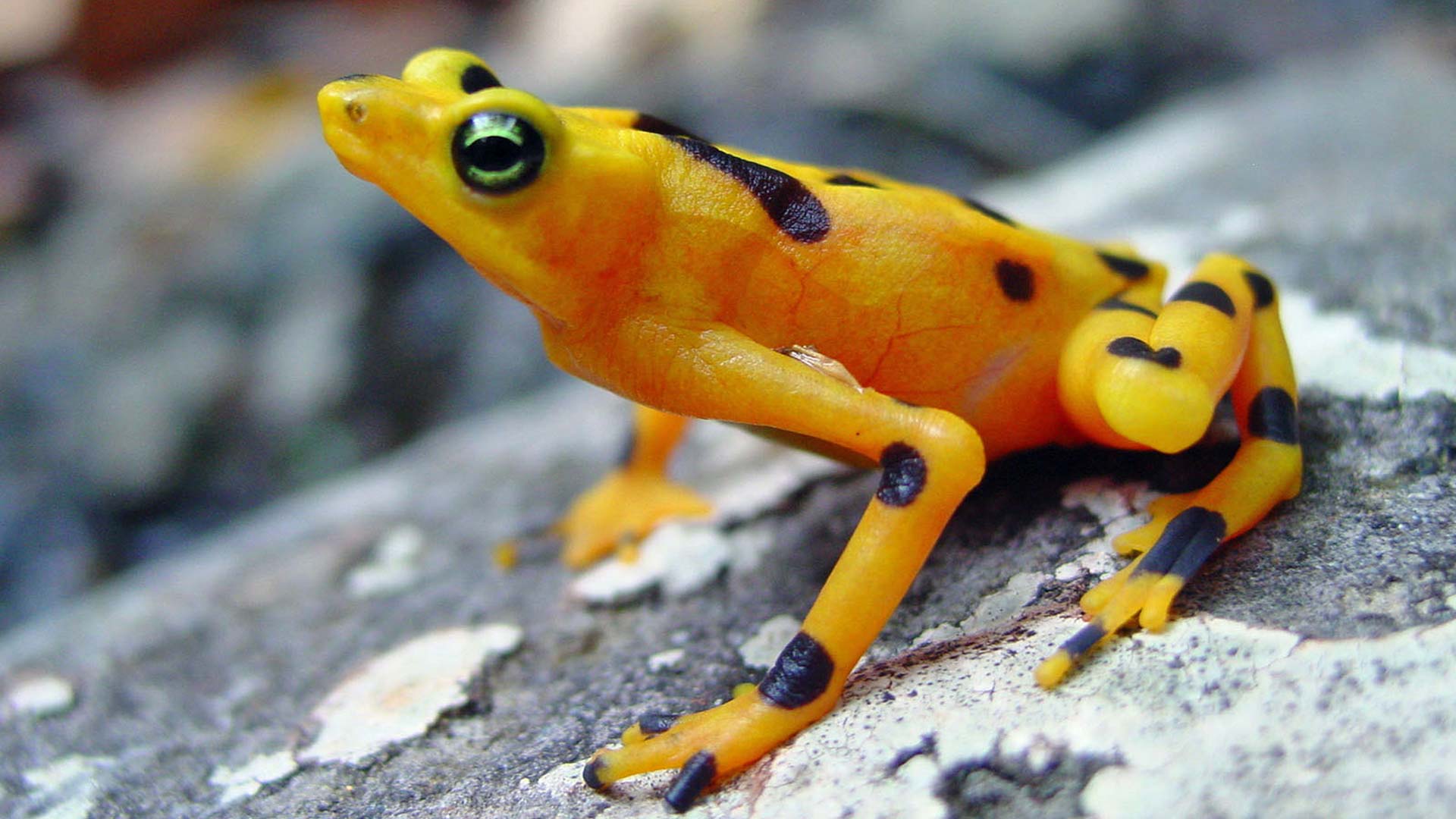 A healthy golden frog in the streams of Panama.
A healthy golden frog in the streams of Panama.
Scientists from the U.S. and Panama have found that some frog species can recover from chytridiomycosis, an infectious disease partly responsible for amphibian die-offs around the world.
"The infectious disease is a distinctive one; it's not very common that an infectious disease can cause a species to go to extinction," said James Collins, an evolutionary ecologist at Arizona State University who wrote an article describing the results.
Both Collins's article and the research appear in the March 30 issue of the journal Science.
Globally, frogs, toads and other amphibians are disappearing from their habitats at an alarming rate. These declines stem from a combination of climate change, habitat loss, invasive species and disease.
That includes frogs in Arizona, such as common grass frogs and the threatened Chiricahua leopard frog.
 VIEW LARGER Scientists collect samples from amphibians near tropical streams in Panama.
VIEW LARGER Scientists collect samples from amphibians near tropical streams in Panama. Chytridiomycosis is caused by Batrachochytrium dendrobatidis, a microscopic aquatic fungus that colonizes and infects amphibian skin, disrupting the animal's ability to absorb moisture, ultimately killing it.
Responses to chytridiomycosis vary: Some species shrug it off; others go extinct.
"Current estimates place the number of species that have gone extinct in the range of about 200 since the 1990s — the early 1990s, late 1980s," said Collins.
Other species undergo steep population drops, then recover and successfully coexist with the disease.
"The question is, what is it that's enabling these animals to come back?"
By comparing the current disease to samples gathered a decade earlier, researchers were able to eliminate one key possibility: that the disease had weakened.
"The pathogen has not changed. It's as lethal today as it was a decade ago, which suggested to these researchers that it was the frogs that were in fact changing in some way."
Collins worked in one of the Panama research sites from 2004-2005. He says that, once the infectious fungus appeared in the communities, 65-70 species quickly declined.
The new research shows nine species have rebounded, although the pathogen remains.
Whether the rebound occurred because circumstances induced changes in gene expression or because of genetic changes that provided a new survival advantage remains unclear. But the recovery does suggest avenues for future infectious disease research.
Watch: Scientists take diagnostic samples to test for disease in a glass frog


By submitting your comments, you hereby give AZPM the right to post your comments and potentially use them in any other form of media operated by this institution.